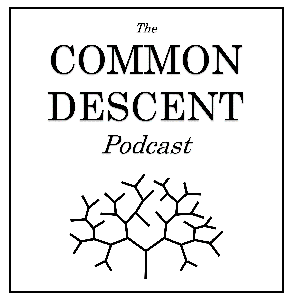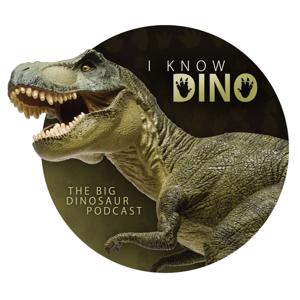
Sign up to save your podcasts
Or




What did dinosaurs sound like? How did extinct animals make and use sound? Like most behaviors, noises don’t fossilize, but there is some tantalizing evidence that paleontologists have pulled together about fossil bioacoustics. In this episode, we discuss how pop-culture may have misled us, and how scientists have gathered actual clues from living animals and the fossil record – and have even made scientifically-inspired ancient audios! – to reconstruct the sounds of the past.
In the news: hatchling insects, bird brains, old flowers, and dinosaur noses.
Time markers:
There are some noises in this episode! The living and reconstructed-fossil sounds we played came from these sources:
Great Bittern (Botaurus stellaris) Roger Charters/Macaulay Library at the Cornell Lab of Ornithology (ML202485) https://macaulaylibrary.org/asset/202485
American Alligator (Alligator mississippiensis) George B. Reynard/Macaulay Library at the Cornell Lab of Ornithology (ML163792) https://macaulaylibrary.org/asset/163792
Parasaurolophus sound bite by Sandia National Laboratories and the New Mexico Museum of Natural History and Science with Paleontologist Tom Williamson and computer scientist Carl Diegert https://www.sandia.gov/media/dinosaur.htm
Katydid Stridulation from Jun-Jie Gu et al 2012. Wing stridulation in a Jurassic katydid (Insecta, Orthoptera) produced low-pitched musical calls to attract females, PNAS (Open access) https://www.pnas.org/content/early/2012/02/02/1118372109
All the other animal noises were just made by us!
Check out our blog for bonus info and pictures:
Follow and Support us on:
The Intro and Outro music is “On the Origin of Species” by Protodome.
Muscial Interludes are "Professor Umlaut" by Kevin MacLeod (incompetech.com). Licensed under Creative Commons: By Attribution 3.0
 View all episodes
View all episodes


 By Common Descent
By Common Descent




4.8
719719 ratings

What did dinosaurs sound like? How did extinct animals make and use sound? Like most behaviors, noises don’t fossilize, but there is some tantalizing evidence that paleontologists have pulled together about fossil bioacoustics. In this episode, we discuss how pop-culture may have misled us, and how scientists have gathered actual clues from living animals and the fossil record – and have even made scientifically-inspired ancient audios! – to reconstruct the sounds of the past.
In the news: hatchling insects, bird brains, old flowers, and dinosaur noses.
Time markers:
There are some noises in this episode! The living and reconstructed-fossil sounds we played came from these sources:
Great Bittern (Botaurus stellaris) Roger Charters/Macaulay Library at the Cornell Lab of Ornithology (ML202485) https://macaulaylibrary.org/asset/202485
American Alligator (Alligator mississippiensis) George B. Reynard/Macaulay Library at the Cornell Lab of Ornithology (ML163792) https://macaulaylibrary.org/asset/163792
Parasaurolophus sound bite by Sandia National Laboratories and the New Mexico Museum of Natural History and Science with Paleontologist Tom Williamson and computer scientist Carl Diegert https://www.sandia.gov/media/dinosaur.htm
Katydid Stridulation from Jun-Jie Gu et al 2012. Wing stridulation in a Jurassic katydid (Insecta, Orthoptera) produced low-pitched musical calls to attract females, PNAS (Open access) https://www.pnas.org/content/early/2012/02/02/1118372109
All the other animal noises were just made by us!
Check out our blog for bonus info and pictures:
Follow and Support us on:
The Intro and Outro music is “On the Origin of Species” by Protodome.
Muscial Interludes are "Professor Umlaut" by Kevin MacLeod (incompetech.com). Licensed under Creative Commons: By Attribution 3.0

489 Listeners

524 Listeners

6,414 Listeners

1,244 Listeners

6,297 Listeners

905 Listeners

2,341 Listeners

13,558 Listeners

187 Listeners

3,205 Listeners

8 Listeners

243 Listeners

1,829 Listeners

836 Listeners

22 Listeners